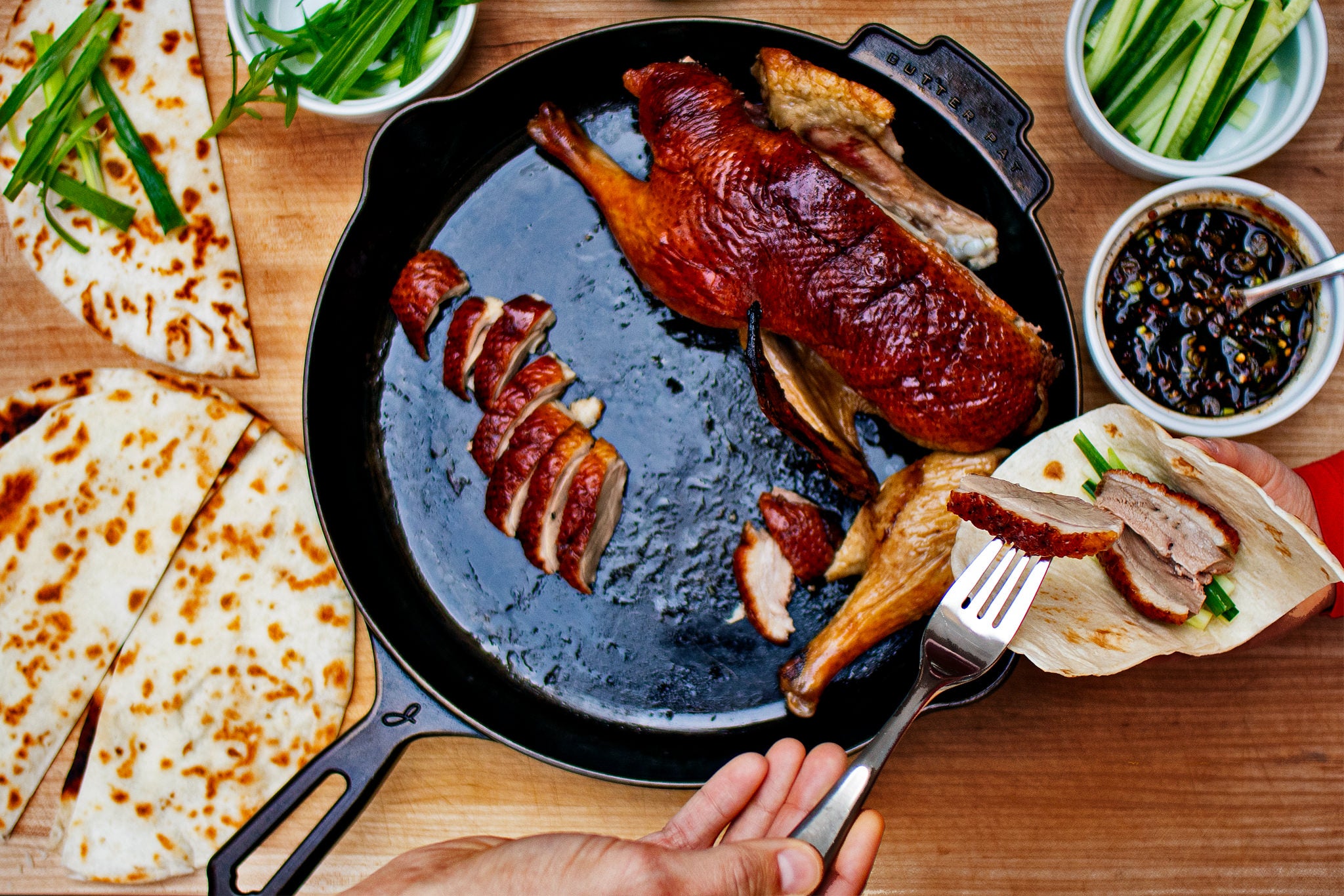

FINALLY, A FOOLPROOF METHOD FOR CHRISTMAS GOOSE
Wade Truong didn’t grow up cooking wild game.
From a young age, the Virginia native was no stranger to the kitchen, having worked at his parents Saigon Café in Harrisonburg, then climbing the ranks to become executive chef at the popular Kybecca in Fredericksburg. But it wasn’t in these restaurants that he learned how to smoke wild turkey, sous vide duck, roast venison, or filet a snakehead—the kind of cuisine he’s become known for today.
Instead, in many ways, the first-generation hunter learned on foot, in the field, handing in a toque for his own stove, perfecting the art of cooking food that he has harvested by hand along the way.
“We don’t buy any meat anymore—our protein intake is almost entirely wild game, which is what we cook every day,” says Truong, including his partner, Rachel. “There’s a bit of romance to the fact that these animals are not all the same. They taste of the terroir—the place, the season, the time of year. It adds more nuance to every meal.”
Together, the couple has founded Elevated Wild, a popular field-to-table food blog that has garnered nearly 9,000 Instagram followers and attention from the likes of Garden & Gun and The New York Times. In their mid-30s, they’re part of a new class of millennial hunters who, inspired by the local sourcing movement, are turning to the great outdoors for more sustainable protein.
“When I started out, I didn’t have any mentors, nobody in my family hunted, so I just fell into the same camp as everybody else, which is looking online for recipes,” says Truong. “There are a lot of old-school game recipes that basically require you to douse the meat in some strong flavor like Coke or Italian dressing or cream of mushroom soup and then cook it to death, which is just the worst way to do it. Treat it like a premium product—how would you cook an A5 Wagyu steak?”
This time of year, as the deer season comes to a close, and the waterfowl begin to settle along the Chesapeake Bay, Truong is setting his sights on ducks and Canada geese, the latter of which he hunts in nearby farm fields as the birds arrive from Quebec to feast all winter on leftover commodity crops like corn and soybean.
“The flavor is easy to like, it’s very mild, and very beefy,” says Truong, who uses goose to craft myriad recipes, from classics such as confit legs to more creative takes such as pastrami, phở, and barbacoa, committing to using the entire animal, from the necks for sausage casings to the carcass for homemade stock. “Early on, I saw a lot of people just breasting out birds and throwing everything else away, which to me seemed very wasteful…There’s really nothing quite like this. It’s something you can’t just go out and buy at the grocery store.”
This time of year, Truong pulls out all the stops for one whole-animal holiday dish in particular: Peking goose.

“It’s one of the best ways I’ve found to cook a whole goose,” he says of the notoriously fickle dish, as different parts of the bird cook at different rates and lend better to different cooking methods. “It’s usually a big production that takes me about a week. I have to plan ahead, but it’s honestly one of the best things I’ve ever had made with Canada goose, where the breast meat is not overcooked and the [typically tougher] legs are fairly tender.”
For this low-and-slow roasting method, Truong recommends finding a small goose, preferably seven or eight pounds in weight, at times using pre-heated cast-iron pans to hold his roasting rack, as well as for the basting oil.
“There’s a lot of emphasis on using cast iron for high temperatures, but it’s great at low temperatures, too,” he says, thinking of the medium as the perfect vessel for making braised game dishes like confit. “I even like to start duck and goose breasts in a cold pan to render out some of the fat and still get that crispy skin. A cast iron warms up at an ideal rate and maintains that steady heat. You get a nice hard sear and a really even cooking experience.”
And while goose sounds good and all, Truong has a number of other wild game recipes that happen to be cast-iron friendly: deer tallow cornbread, rabbit curry, beaver bacon—even his rendered animal fats, be it duck, goose, or deer, to season your skillet.
“If there was only one pan I could have, it could be cast,” he says. “You can use it for just about everything.”
About Wade Truong



